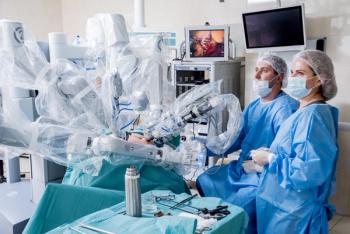
HBV reactivation with direct acting antivirals for HCV is highly manageable
New study indicates early recognition of HBV-HCV co-infection can lead to prompt treatment of HBV reactivation.
Direct-acting antiviral agents (DAAs) are a safe and highly effective treatment for hepatitis C virus (HCV) infection and, with proper screening, monitoring and treatment, reactivation of hepatitis B virus (HBV) is a manageable adverse event, according to a new study.
Recent reports have noted HBV reactivation in patients with HBV–HCV co-infection. The Food and Drug Administration (FDA) has asked the manufacturers of DAAs to update their labeling to indicate the potential for HBV reactivation with treatment. In September 2016,
The researchers published their
HBV reactivation, defined as an abrupt increase in HBV replication in patients with inactive or resolved HBV infection, may result in clinically significant hepatitis, stated researchers led by Susan Bersoff-Matcha, MD, a medical officer with the FDA, located in Silver Spring, Maryland.
“DAAs remain a safe and highly effective treatment for the management of HCV infection, and are a well-tolerated class of medications that may be administered by more primary care physicians and physician extenders in the future,” Bersoff-Matcha told Medical Economics.
“The goal of our paper was to make sure all physicians are aware of the possibility of the HBV reactivation risk in patients co-infected with HBV-HCV who are initiating HCV DAAs,” she said. “In patients with serologic evidence of HBV infection, FDA recommends that physicians should monitor for clinical and laboratory signs of hepatitis flare or HBV reactivation during DAA therapy and during post-treatment follow up. Antiviral therapy for HBV infection should be given if criteria for HBV treatment are met.”
Bersoff-Matcha and colleagues identified 29 unique case reports of HBV reactivation in patients receiving DAAs from November 22, 2013 to October 15, 2016. These patients with HBV reactivation were heterogeneous in regard to HCV genotype, DAAs received, and baseline HBV characteristics.
Two-thirds of the patients were from Japan, and five patients were from the United States. The patients, an average age of about 61 years, were split about evenly between men and women. Of the 17 patients with HBV reactivation with a known HCV genotype, 15 patients had genotype 1 virus.
Reactivation of HBV usually occurred four to eight weeks after initiation of DAA therapy. The average time from DAA start to HBV reaction was 53 days.
At baseline, nine patients had a detectable HBV viral load, seven had positive results on hepatitis B surface antigen (HBsAg) testing and had an undetectable HBV viral load, and three had negative results on HBsAg testing and had an undetectable HBV viral load. Information was lacking for the remaining 10 patients.
Despite provider knowledge of baseline HBV, HBV reactivation diagnosis and treatment were delayed in seven cases and possibly in seven others.
Three patients with HBV reactions developed decompensated liver failure. Two of these patients died and one patient went on to liver transplantation.
The researchers suggested that further studies would help determine the risk factors for HBV reactivation, define monitoring frequency, and identify patients who may benefit from HBV prophylaxis and treatment.
No consistent results regarding which DAA regimens lead to HBV reactivation suggests the potential for a class-effect with DAAs.
The results highlight the need for early recognition of HBV-HCV co-infection and prompt treatment of clinically significant HBV reactivation, they stated.
Newsletter
Stay informed and empowered with Medical Economics enewsletter, delivering expert insights, financial strategies, practice management tips and technology trends — tailored for today’s physicians.
















